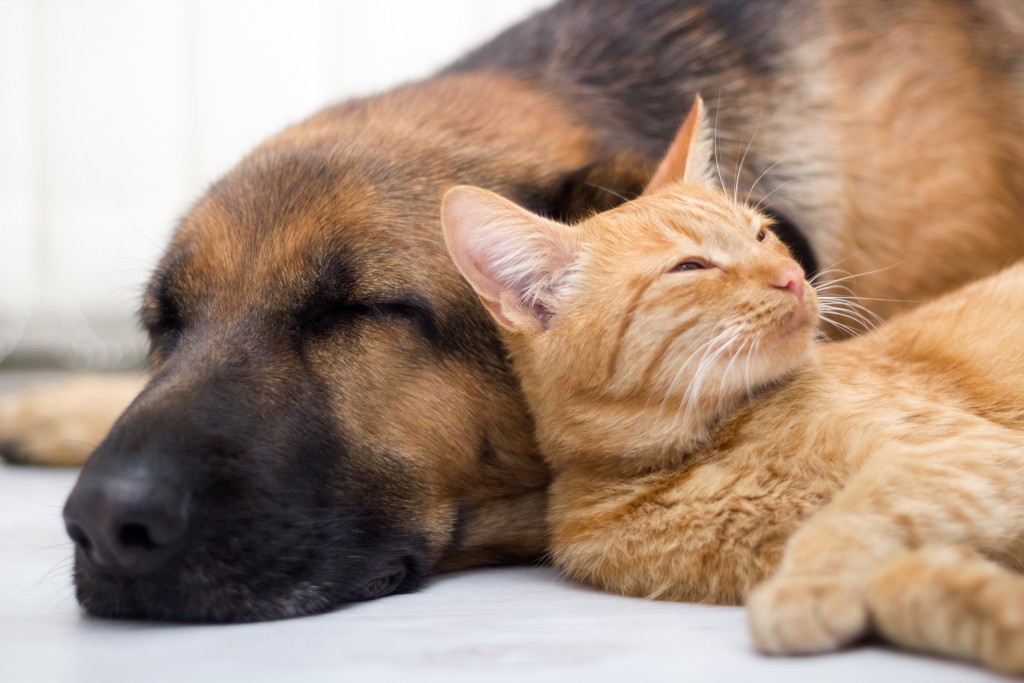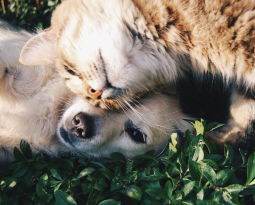Welcome back to another entry at the Acoma Animal Clinic blog! This month we have been focusing on dog behavior and places in Tucson (our home city!) that well-behaved dogs and their owners can enjoy happily. It’s not our usual specialty, after all we are a vet clinic not an animal training center, but it is related to our interest: Happy home for pets and owners alike! If you are one of those people who toe the line on dog person/cat person then you may be looking at how you can bring the two under your roof together. Here are some tips we’ve gathered from experts on how to introduce and handle your cohabitating animals!
General Pet Introduction Info
Confinement
One of the critical steps to any pet introduction process is confinement. Both animals should be kept separate to begin with. Your new cat should be placed in a room of at least medium size with their food, water, and litter box. Feed your animals on either side of the door, progressively getting closer and closer til they both can comfortably eat nearby (though still on other sides of the door) without being distracted or otherwise agitated by the smell of the other on the other side.
Scent Swap
As the two animals are existing in the home in separate places they are becoming acclimated to the other’s scent. Help this along by petting and stroking one animal and then moving to the other and back and forth.
Again this is to make sure they are comfortable with the smell of the other pet.
After awhile switch the room they are confined too so they can get the chance to walk about and smell all they want.
If after a few days of this separated introduction the dog is still barking or digging at the barrier between it and the cat this introduction may be harder than previously hoped and require proper training and help from a professional.
Leashed Introductions
After several days of separation and scent acclimating, and no other negative instances or warnings, you can begin the next phase of introduction.
Allow both animals to be in the same room, but keep the dog securely leashed. Continue this introduction until the dog remains calm and ignores the cat. That cat should also be calm and able to eat and use the litter box.
If you can tell that there is fear or aggression in either animal then you need to go back to the separation acclimation for longer. Keep this up until the two animals are relaxed and happy around each other. Take as long as you need here. When you’re gone or the pets are otherwise unsupervised keep them separated. Not only do you not want for them to be aggressive, but even without any injuries you don’t want for either pet to develop bad behaviors in relation to the other.
Avoid any sort of scary or nervous meetings. Any sort of circumstance that might create unease in either animal can put a handicap on your pets living a calm life together.
Live Together
After the pets have had supervised interactions for enough time (at least a month) and you are certain they will not hurt each other, only then can you let them have unsupervised time together.
These steps will only go well and accordingly if your pet is obedient and there are no aggressive behaviors at any stage. Remember introducing cats to an aggressive dog can be so, so dangerous for them. Cats are fragile and a dog, even if just roughly playing, can hurt them or worse. If you are at all hesitant of what you are seeing in your canine then it would benefit you to either get professional training help or to not attempt to bring a cat into the home, despite how much you wish you could.
Remember, getting a professional can help but only so far. Sometimes animal temperament is just set, much like ourselves.
We hope you have been able to use some of this to help the animals in your life to get along better. Remember, caring for another pet means more visits to the vet to keep their health in tip-top shapes so don’t forget to Contact Us and get their regular check-ups scheduled!





